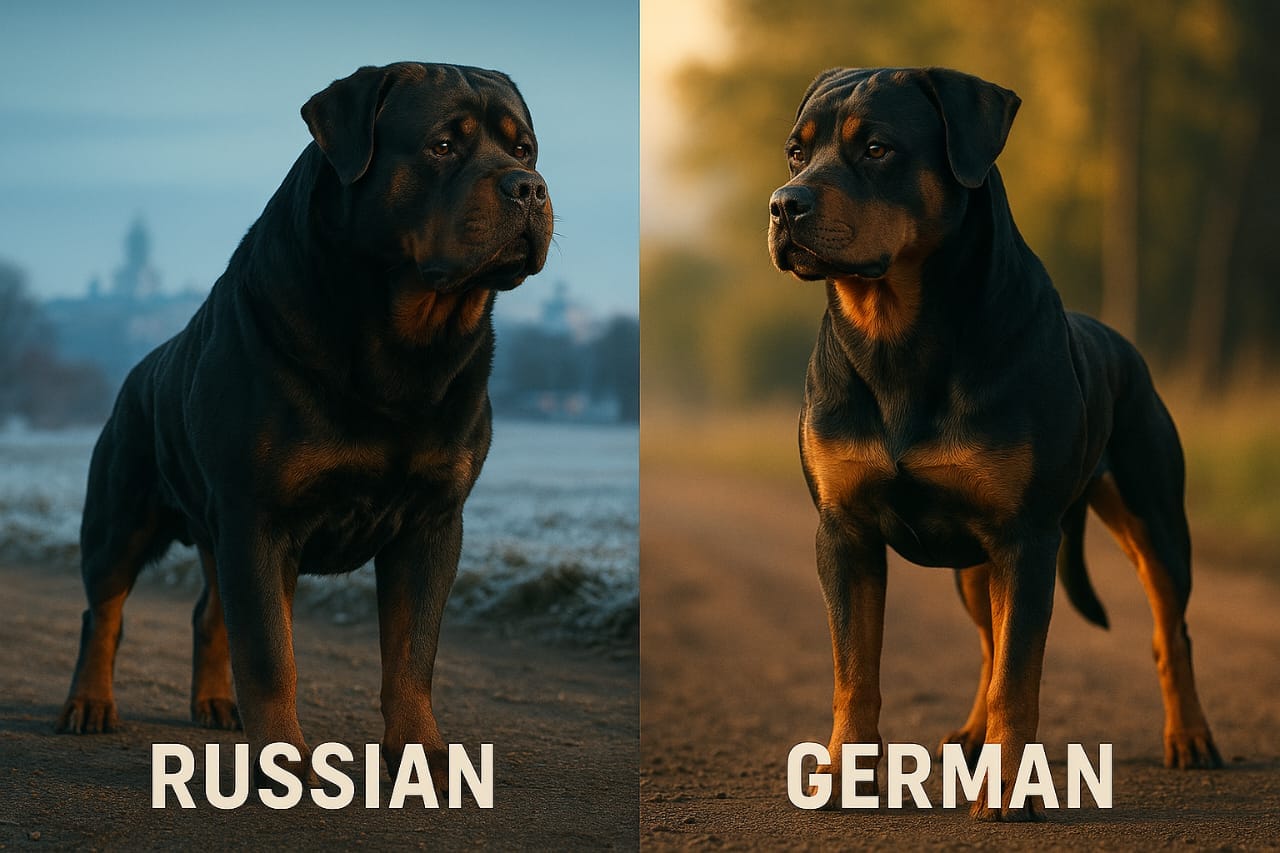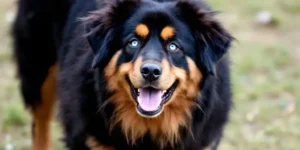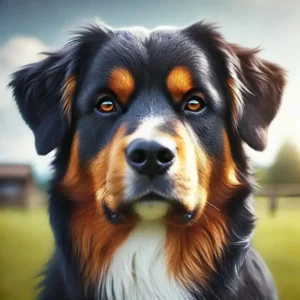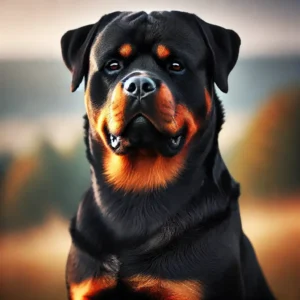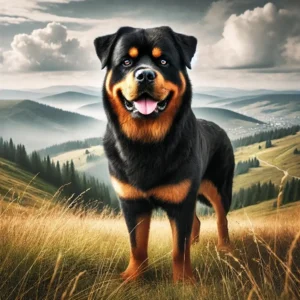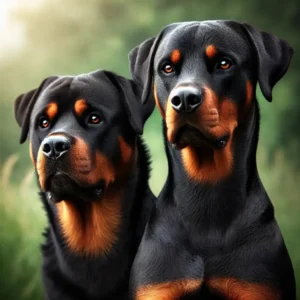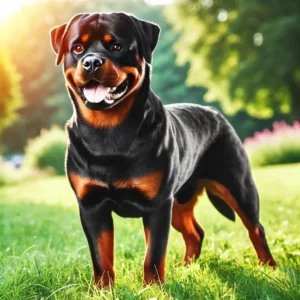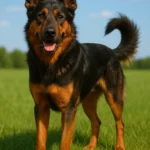Russian Rottweilers and German Rottweilers
Russian Rottweiler vs German Rottweiler the conversation between Russian Rottweilers vs German Rottweilers is curious for dog partners. While both sorts belong to the same breed, they have unique characteristics formed by their roots and breeding hones. Understanding these contrasts can assist potential proprietors in selecting the proper companion for their lifestyle, especially when considering American Rotties or German Rottweilers.
Key Takeaways
- German Rottweilers are known for strict breeding benchmarks, driving steady well-being and disposition.
- Russian Rottweilers, moreover called Serbian Rottweilers, regularly need strict breeding rules, which can influence their behavior.
- Both breeds share a standard family line but have created unmistakable characteristics over time, such as the differences seen in German vs Serbian Rottweilers.
- German Rottweilers are calmer and more trainable than their Russian partners.
- Choosing between the two depends on your circumstances and the sort of canine you need.
Roots and Ancestry
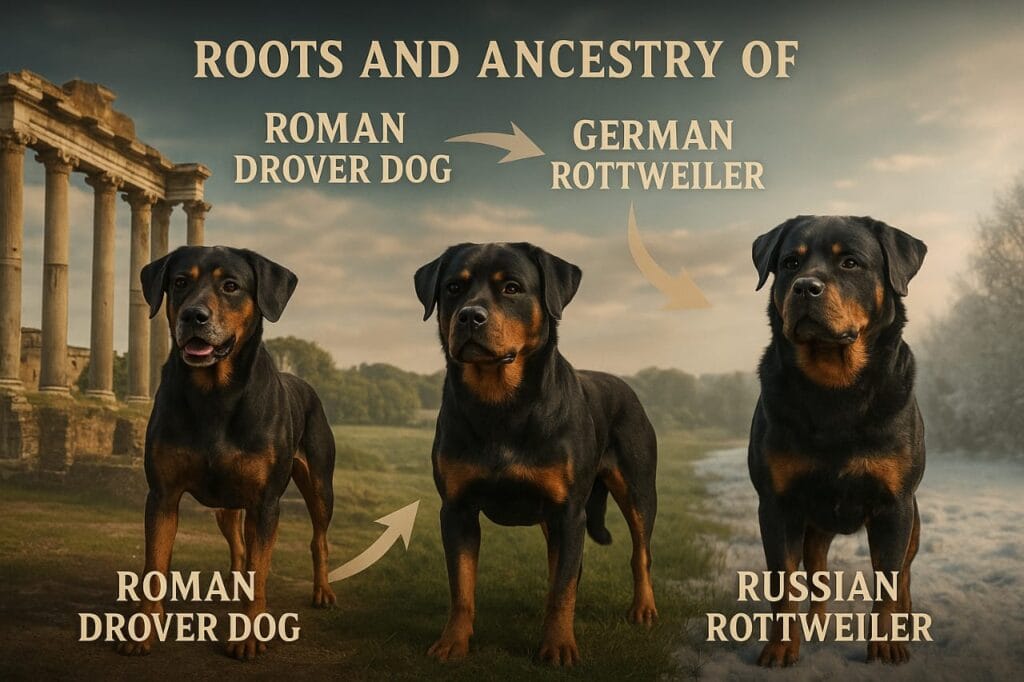
Chronicled Foundation of Russian Rottweilers
Russian Rottweilers have a rich history that dates back to the early 20th century. They were bred for working purposes, counting, guarding, and crowding, much like the Rotties used in kennels today. Over time, Russian breeders focused on making mutts that were not as solid but had a calm personality, similar to Serbian Rotties. This focus on utility has led to a breed well-suited for different assignments.
Authentic Foundation of German Rottweilers
On the other hand, German Rottweilers have an ancestry that goes back to antiquated Roman times. They were initially utilized to drive cattle and pull carts. The breed was recognized in Germany in the late 19th century, and strict breeding measures were set up to preserve their physical and mental qualities. This has resulted in a breed that’s both capable and clever, with notable distinctions between the German Rottweiler and the Doberman.
Contrasts in Heredity
The most contrasts in heredity between Russian and German Rottweilers can be summarized as follows: German Rottweiler vs American Rottweiler highlights significant differences in temperament and physical traits.
- Reason for Breeding: Russian Rottweilers were bred for flexibility, whereas German Rottweilers were bred for particular assignments.
- Breeding Benchmarks: German Rottweilers follow strict benchmarks set by organizations like the American Kennel Club, guaranteeing quality and consistency.
- Physical Characteristics: Russian Rottweilers may have a distinctive appearance due to changed breeding hones.
| Highlights | Russian Rottweilers | German Rottweilers |
| Beginning | 20th CenturyCentury | Antiquated Rome |
| Essential Utilize | Flexible Working | Cattle Driving |
| Breeding Benchmarks | Less Strict | Very Strict |
Exceptionally Strict
Rottweilers are a working breed whose ancestry reflects the errands they were bred to perform. Understanding their roots makes a difference in increasing the value of their one-of-a-kind characteristics.
Breeding Guidelines
Russian Rottweilers and German Rottweilers
German Rottweiler Breeding Benchmarks
The Allgemeiner Deutscher Rottweiler Klub (ADRK) breeds German Rottweilers under strict rules. These guidelines guarantee that, as it were, the most advantageous and most competent mutts are utilized for breeding. Key focus areas include:
- Minimum age: Females must be at least 20 months old, whereas males should be 24 months old according to breed standards.
- Well-being checks: Pooches must pass a Breed Reasonableness Test and have certified hip evaluations (HD or HD±).
- Breeding frequency: A male can mate with a maximum of two females per week and no more than 40 females per year.
Russian Rottweiler Breeding Hones
Russian Rottweilers may not follow the same strict guidelines as their German partners. In any case, they still center on creating solid and sound mutts. Common honeys incorporate:
- Less emphasis on family: Whereas some Russian breeders esteem ancestry, many prioritize physical characteristics and personality in Rotties vs American rottweilers.
- Changing breeding strategies: Breeders may utilize inbreeding, line breeding, or out-crossing to attain wanted traits.
- Well-being concerns: Less control on well-being testing can lead to potential issues in descendants, especially in the German vs American Rottweiler comparisons.
Comparing German and Russian Rottweilers: Key Differences
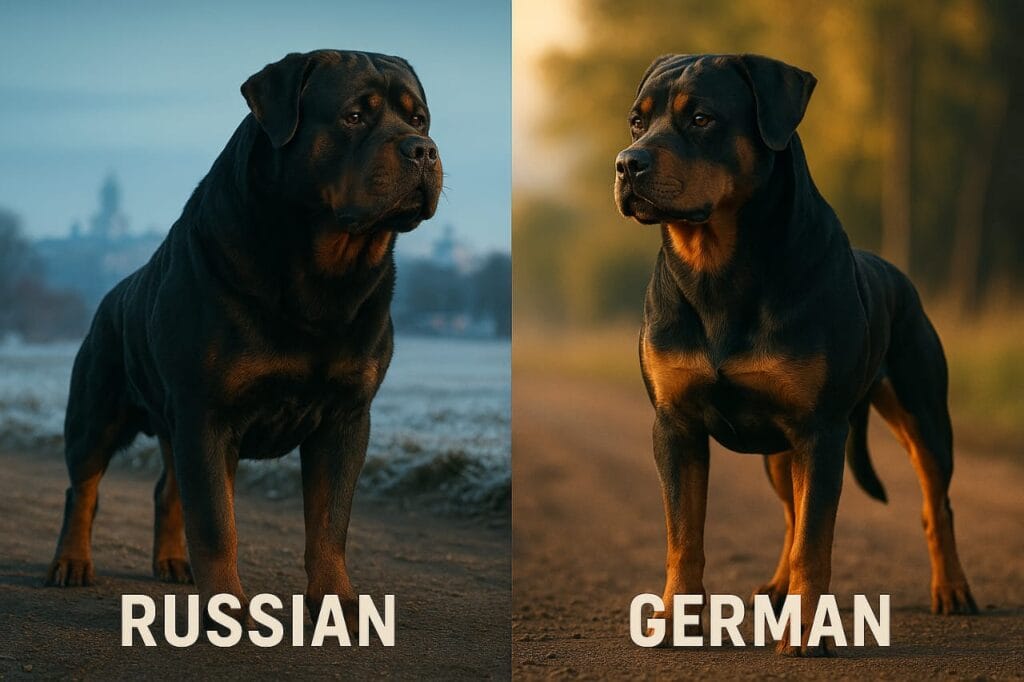
The German Rottweiler is bred for working, with a solid drive and adherence to strict breed benchmarks, exceeding expectations in errands like crowding and guarding. In differentiation, the American Rottweiler includes a looser personality and a blockier head, centering more on companionship. Serbian Rottweilers, mixing characteristics from both German and Russian lines, offer an adjustment of working capacity and distinctive appearance. These contrasts in disposition, compliance, and well-being offer assistance to canine proprietors selecting between the German or American Rottweiler based on their needs.
The Effect of Breeding Guidelines on Well-being
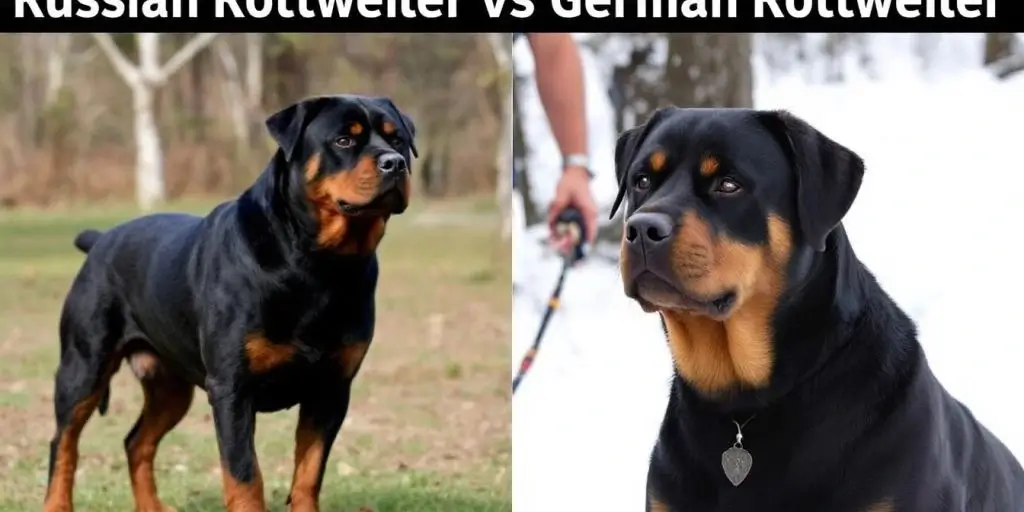
The contrasts in breeding benchmarks between Russian and German Rottweilers can influence their well-being. For occurrence:
- Higher well-being dangers: Breeding without strict rules can lead to genetic disarrangements.
- Taken toll suggestions: Mutts bred beneath strict benchmarks regularly take a toll more due to the thorough testing and quality confirmation included. Numerous Rottweiler breeds follow the German ADRK guidelines, highlighting stricter breeding and behavioral requirements than the AKC, making the mutts take a toll more.
- Long-term impacts: Following tall breeding benchmarks, by and large, come about in healthier pooches with way better personalities, making them more appropriate as family pets.
Breeding hones play a vital part in Rottweilers’ general well-being and temperament, particularly in the context of purebred standards. Choosing a trustworthy breeder is essential for guaranteeing a sound companion.
Rottweiler vs German Rottweiler: Exploring Breed Differences
When choosing between a Rottweiler, German Rottweiler, or Serbian Rottweiler, it’s imperative to understand the key contrasts that set them apart. While all have a place in the same breed, varieties emerge from their nation of origin and particular breeding hones. The German Rottweiler, bred basically for working purposes, is frequently known for its quality, stamina, and adherence to strict breed guidelines. In differentiation, the American Rottweiler tends to have a looser disposition, with a blockier head.
Serbian Rottweilers mix characteristics from both the German and Russian lines, coming about in a blend of physical and behavioral characteristics. These varieties in adaptation, well-being, and personality can impact your choice of the finest Rottie for your domestic. Whether you’re drawn to the working drive of the German Rottweiler or the more laid-back nature of the American Rottweiler, understanding these contrasts makes a difference in you selecting the correct fit for your way of life.
Personality and Behavior
Familiar Personality of German Rottweilers
German Rottweilers are known for their devotion and insight. They are mostly calm and sure, making them incredible family pets, especially when trained like a good dog.
Here are a few key characteristics:
- Defensive: They are defensive of their families.
- Inviting: Often, they get along well with children and other pets.
- Trainable: Reacts well to preparation and socialization.
Familiar Personality of Russian Rottweilers
Russian Rottweilers, on the other hand, can be more forceful due to less strict breeding guidelines. They require cautious preparation and socialization to guarantee they create an inviting mien.
Key focus areas include:
- Possible Forceful: May appear antagonistic if not appropriately prepared, particularly in American or German Rottweilers.
- Needs Consideration: It requires more time and exertion to prepare.
- Steadfast: Like their German partners, they are exceptionally faithful to their families.
Preparation and Socialization Needs
Both breeds require reliable preparation and early socialization, particularly when considering the differences between the German and Serbian Rottweilers.
Here are a few imperative angles:
- Start Early: Start preparing before you bring your puppy home.
- Positive Support: Utilize treats and praise to energize excellent behavior in German Rotties.
- Socialize: Uncover them to distinctive individuals, pets, and situations to construct certainty.
Russian Rottweiler vs German Rottweiler: Key Differences Between Breeds
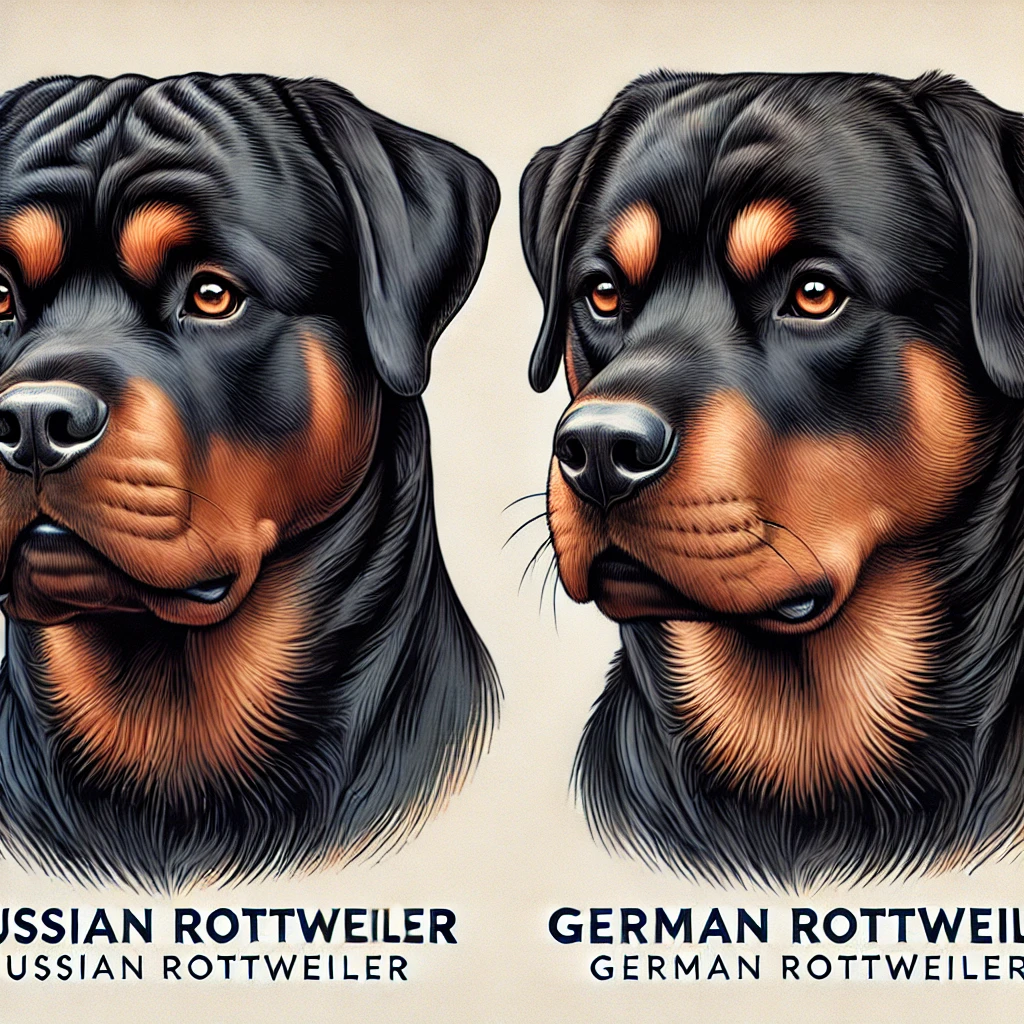
While the American Rottweiler is often larger and has a more relaxed temperament, it was intended largely as a purebred companion. In contrast, the German Rottweiler is bred for working reasons, emphasizing strength and endurance. The working drive of the German Rottweilers is combined with a unique physical appearance in Serbian Rottweilers, which combine traits from both breeds, including the German shepherd. When deciding between the German, American, or Serbian Rottweiler, prospective dog owners must be aware of these distinctions.
Russian and German Rottweiler Diet Plan

Reasonableness as Pets
Family Compatibility
Russian and German Rottweilers can be excellent family pets but have distinctive characteristics. German Rottweilers are, for the most part, more steady and inviting, making them way better suited for families with children. Russian Rottweilers may require more preparation to guarantee they are calm around kids.
Workout and Space Prerequisites
Rottweilers are lively mutts that require a customary workout.
Here are a few key focuses to consider:
- Daily strolls: At least 1 hour of workout is suggested.
- Recess: Lock in diversions like fetch to keep them dynamic.
- Space: Guarantee you’ve got sufficient room for them to move around comfortably.
Well-being Contemplations
Well-being is a critical factor when choosing a pet.
Here is a quick comparison:
| Viewpoint | German Rottweiler | Russian Rottweiler |
| Well-being Measures | Stricter | Less strict |
| Common Well-being Issues | Hip dysplasia, heart illness | Comparable issues |
| Life expectancy | 8-10 a long time | 8-12 a long time |
Rottweilers require reliable preparation and socialization to flourish as pets, emphasizing the need for early training in both German and American varieties. Without appropriate care, Rotties may create behavioral issues.
In summary, while both breeds can be brilliant companions, the German Rottweiler is frequently seen as a distant better, a much better, a higher, a more robust, an improved higher fit for families due to its disposition and preparedness responsiveness. The Russian Rottweiler, while faithful, may require more exertion to guarantee it carries on well in a domestic environment.
Special Characteristics and Highlights
Particular Characteristics of German Rottweilers
German Rottweilers are known for their solid construction and fantastic size. They ordinarily have a blocky head and a well-defined body structure.
Here are a few key characteristics:
- Strong physical make-up: They are more muscular than their Russian partners.
- Blocky head: This is often a trademark of the breed, giving them a capable appearance in conformation shows.
- Personality: They are frequently depicted as sure and steadfast, making them fabulous companions, particularly the German Rottie.
Particular Characteristics of Russian Rottweilers
Russian Rottweilers, on the other hand, have a few notable highlights that set them apart:
- Marginally taller: They can be taller than German Rottweilers, giving them a diverse position.
- Longer legs: This contributes to their deftness and speed.
- Disposition: They may be more reserved and defensive, which can help guard against
Common Misinterpretations
Numerous people have misunderstandings about Rottweilers. Here are a couple of
- Not all Rottweilers are forceful, usually not genuine; disposition changes by preparation and socialization.
- Measure breaks even with quality: Whereas estimate is essential, health and preparation play a significant part in a dog’s capacities.
- Appearance characterizes breed quality: A dogâs looks don’t continuously reflect its well-being or disposition.
Understanding the one-of-a-kind characteristics of each sort of Rottweiler can offer assistance to potential proprietors to make educated choices. Whether you’re considering a German Rottweiler bred for working purposes or an American Rottweiler known for its laid-back disposition, both breeds have their qualities and deficiencies.
By investigating Rottweilers in online gatherings, considering the compliance, family, and wellbeing of the canine, and understanding the contrasts between German, American, and Serbian Rottweilers, you’ll be able to guarantee a better, a much better, a higher, a stronger, an improved coordinate for your way of life.
Conclusion
In any case of whether you select a German or Russian Rottweiler, they are all individuals of the same breed and have been sustained in completely different situations, though there are a few minor varieties depending on where they were born and developed. Even though they contrast in see and personality (for illustration, the American Rottweiler’s blockier head vs the German Rottweiler’s more ordinary disposition), these contrasts are the result of their breeding and preparing strategies.
Whether you’re inclined toward a German Rottweiler, Serbian Rottweiler, or another assortment, knowing these contrasts will assist you in selecting the finest fit for your domestic whereas too regarding their common breed benchmarks and legacy.
Frequently Asked Questions:
The biggest contrast lies in their breeding measures and personality. German Rottweilers are bred with strict rules, whereas Russian Rottweilers may not take such measures.
Russian Rottweilers can be more forceful due to less controlled breeding hones, requiring more preparation and socialization.
German Rottweilers are mostly better suited for families since they are calmer and more trainable.
Both breeds are massive mutts. German Rottweilers ordinarily weigh between 110 and 132 pounds, whereas Russian Rottweilers can weigh around 132 pounds.
Both Russian and German Rottweilers require regular workouts to remain solid and upbeat.
Completely! Russian and German Rottweilers can be incredible pets but require legitimate training and socialization.
